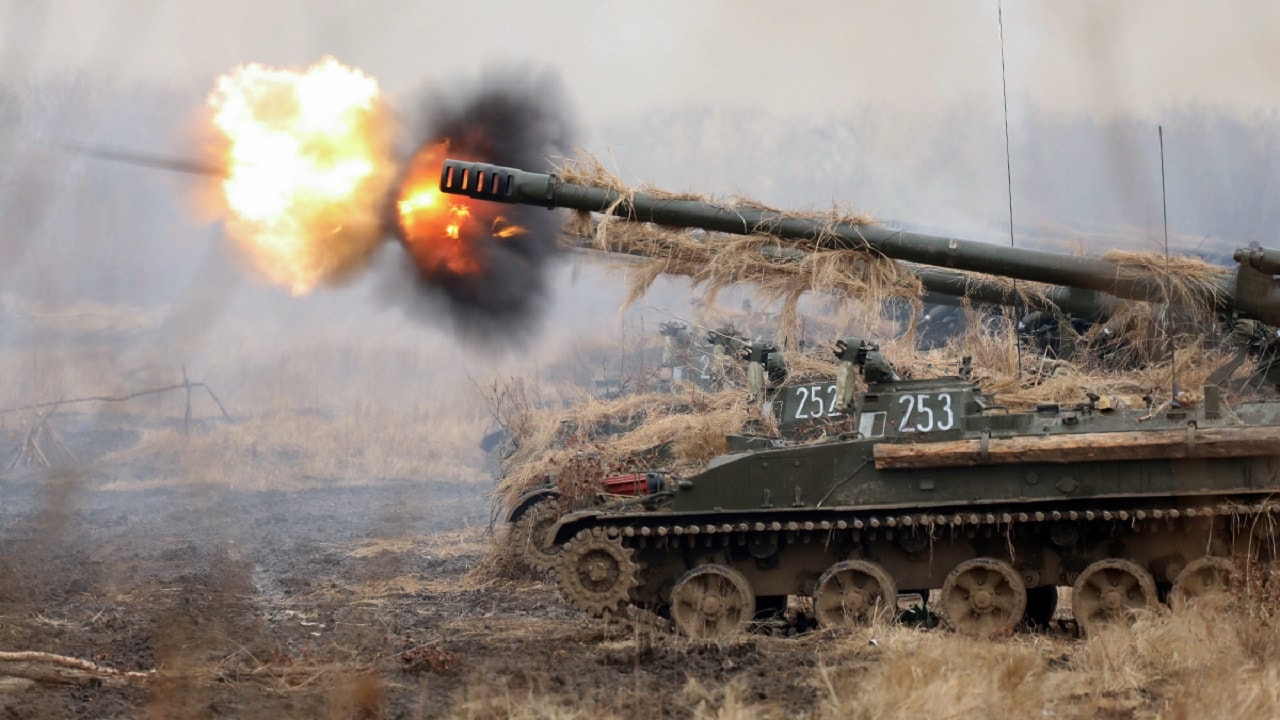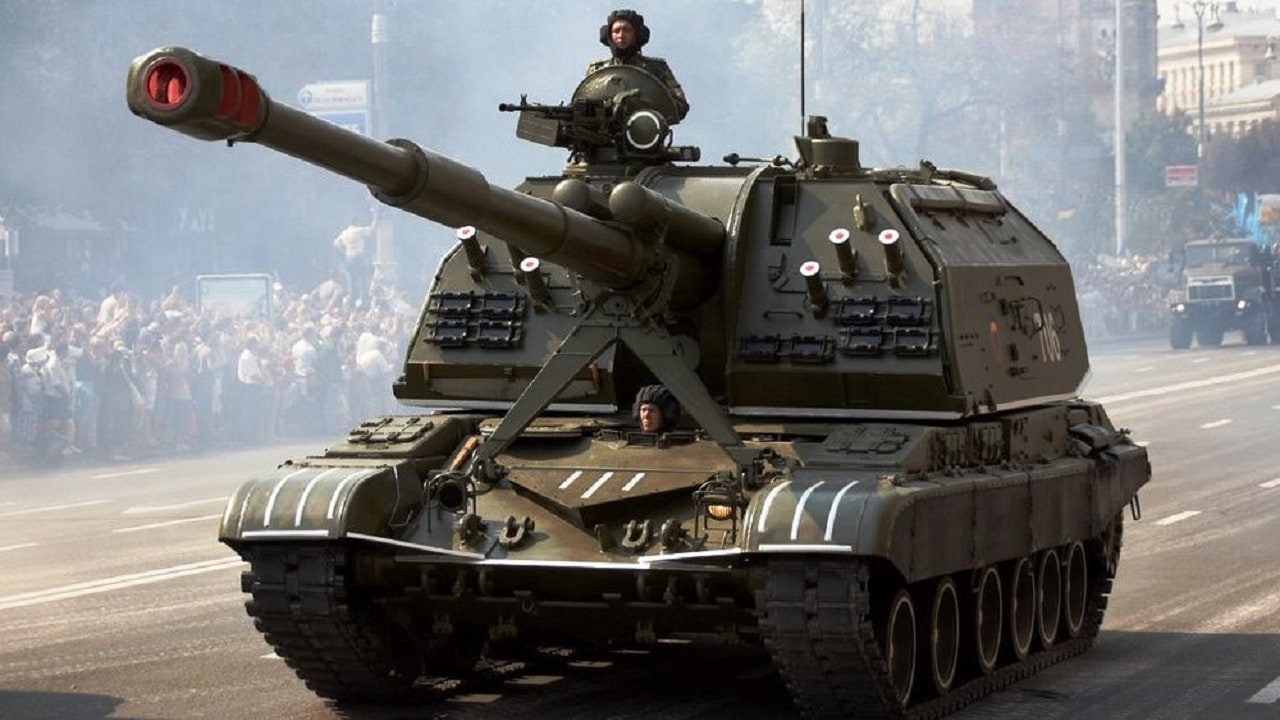Summary and Key Points: Ukrainian forces still control significant territory in Russia’s Kursk region despite Russian pressure, according to General Christopher Cavoli, head of U.S. European Command. Additionally, Ukraine has expanded its presence into neighboring Belgorod.
-Cavoli emphasized maintaining current U.S. force levels in Europe, opposing potential troop reductions proposed by the Trump administration.
-Senior Republicans, including House Armed Services Chair Mike Rogers, strongly support Cavoli’s stance, warning against weakening NATO’s deterrent against Russian aggression.
-Amid ongoing Pentagon reviews, lawmakers stress the importance of a continued strong U.S. military presence, arguing any withdrawal risks emboldening Russia and undermining European and American security interests.
EUCOM Commander: Ukraine Still Holding on in Kursk
Ukraine’s armed forces continue to control a sizable chunk of the Kursk region in Russia despite the Kremlin’s push to squeeze them out, according to a top US commanding general based in Europe.
The Ukrainians have also entered the nearby Belgorod region and are expanding their presence on Russian soil in a separate direction, said US Army General Christopher Cavoli, commander of the United States European Command (EUCOM), during a congressional hearing last Thursday.
“There is a sizable force holding a sizable—diminished, but sizable—chunk of ground inside Russia’s Kursk Oblast right now. And they’re holding on very good defensive terrain south of there in Belgorod,” Cavoli said. “The Ukrainians, a couple of weeks ago, pushed a smaller counteroffensive back into Russia [in Belgorod]. So, we still have a back and forth going up in that area.”
During subsequent testimony to the US House Armed Services Committee (HASC), Cavoli told lawmakers he was against any reductions of the US force levels in Europe. He argued against withdrawing US troops from the continent of Europe, potentially bringing him into conflict with the previously stated plans of the US President Donald Trump administration.
Hold On To Force Levels—No Troop Reductions
Gen. Cavoli told the HASC that he has “consistently recommended” maintaining the same force levels since the start of Russia’s February 2022 invasion of Ukraine. “It’s my advice [to Washington] to maintain that force posture as it is now,” he said.00:09
Cavoli is supported on this issue by senior Republicans in both houses of Congress, but if reports on Pentagon planning are accurate, his viewpoint would be contrary to the Pentagon’s proposal earlier this year to withdraw 10,000 troops from Eastern Europe.
His position and that of many GOP lawmakers highlight the conflicting visions for the US presence in Europe between the Trump White House and the new Secretary of Defense Pete Hegseth on one hand and Republican defense policymakers who advocate a more active role for the US military abroad on the other.
One lawmaker in particular is House Armed Services Chair Mike Rogers (R-Ala.), who has opposed any reduction of the American military’s European force posture. He has also spoken against the recent suggestion that the US relinquish its traditional role of the SACEUR and have this position occupied by any military official other than a US four-star.
Maintain SACEUR Command Authority
Cavoli, testifying in the Senate last week, seconded this position and said it would be “problematic” if the US were to step down from its leadership role of commanding all NATO forces in Europe.
Rogers has not only insisted that the US continue to command allied forces on the continent but has also accused “some at DOD” of trying to steer military resources away from Europe and thus damage US national security interests.
He pressed the Pentagon’s acting assistant secretary for international security affairs, Katherine Thompson, on whether the Defense Department supports keeping US troops in Europe. Thompson sidestepped the question, citing an ongoing Pentagon review.
“The department right now is undergoing a global force posture review,” she said. “No decisions have been made at this time.”
That response did not go down well with Rogers, who had already written to the Pentagon regarding his opposition to any major changes to the US force posture in Europe.
“You should be focused on maintaining the surge posture that we’ve had in Europe since the conflict was started by Russia for the foreseeable future,” Rogers told Thompson, referencing the more than three-year-old Ukraine war.
“Pulling back prematurely would risk inviting further Russian aggression, potentially even against NATO,” Rogers said, adding that he was “concerned” Congress had not been consulted on its thoughts regarding troop levels and disposition in Europe.
Rogers did give credit to President Donald Trump for pressuring NATO allies to increase their defense spending and for acknowledging it is “time to stop the bloodshed” in Ukraine.
Beyond Kursk and Ukraine: A Mistake to Withdraw In The Face of Russia’s Nuclear Threat
Another Republican, Rep. Don Bacon of Nebraska, also spoke out regarding potential troop-level reductions.
“It would be a grave mistake to pull forces out of Europe right now,” Bacon said. “This is a time to deter Russia, and I think withdrawing forces is a sign of weakness.”
For his part, Cavoli testified he would not suggest cutting any forces from Europe, highlighting Russia’s nuclear threat.

Russian military 305th Artillery Brigade’s exercise. 2S5 self-propelled cannon.
“Russia continues to have very powerful strategic forces, thousands of nuclear weapons, and the delivery methods to deliver those [nuclear weapons] are not pointed just any place … they exist for America,” he said. “And our defense against those strategic forces, whether in the air or undersea, begins in the European continent.”
About Author: Reuben F. Johnson
Reuben F. Johnson is a survivor of the February 2022 Russian invasion of Ukraine and is an Expert on Foreign Military Affairs with the Fundacja im. Kazimierza Pułaskiego in Warsaw. He has been a consultant to the Pentagon, several NATO governments and the Australian government in the fields of defense technology and weapon systems design. Over the past 30 years he has resided in and reported from Russia, Ukraine, Poland, Brazil, the People’s Republic of China and Australia.

